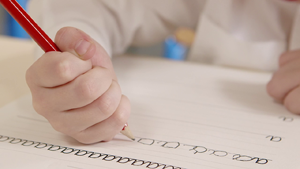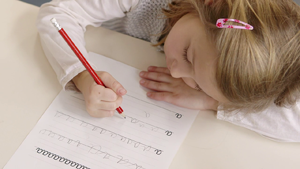Common handwriting problems
Learning to write is a complicated process.
Among the problems observed most frequently:
 Not holding the writing instrument correctly. There is a right way to write that ensures ease of drawing letters and fluent writing. Many children tend to hold the pencil with their whole hand, which doesn’t allow them to write correct shapes and forces them to use their whole arm in their movements.
Not holding the writing instrument correctly. There is a right way to write that ensures ease of drawing letters and fluent writing. Many children tend to hold the pencil with their whole hand, which doesn’t allow them to write correct shapes and forces them to use their whole arm in their movements.
Some children tend to hold their writing instruments too close to the tip obstructing what they are writing. When writing, the field of vision is very important. In order to write well, children need to see the tip of the writing instrument and its point of contact with the paper. It is also essential to make a visual check while writing, which helps the child to remember the letter correctly, and correct the line immediately if necessary. This bad habit also has other consequences, such as poor back posture and muscle fatigue.

Difficulties in the positioning of the body. Before even starting with the positioning of the writing instrument we have to organize the child with a correct position in respect to the paper they are writing on. For example if we place the paper straight in front of the child, the child’s elbow is going to find itself up against his torso which constrains the writing movement of left to right. However, if we place the paper at an angle, there is a total liberty of movement and the child will be able to have movements such as flexion-extension of the wrist. Certain level of flexion-extension of the fingers subsequently allows them to eventually write in cursive.
The writing instrument plays a key part in learning to write.
Writing instruments must have a fairly large diameter to help the child grip; the most suitable size for the small hands of children from 4 to 8 years old is between 8 to 11 mm. The writing tool must be comfortable to hold and allow freedom of movement. Some of the existing instruments today impose a single grip for one lateral dominance (left- or right-handed). These instruments impose a particular grip on the child, making him or her waste time trying to place hands and fingers correctly.
Text reviewed by David Boisdevesys, BIC Product designer and Ergonomist, and Philippe Kotska, psychomotrician.


